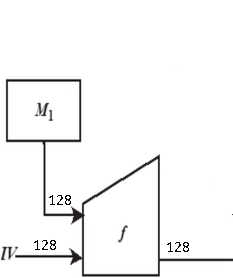Well, not exactly.
The hash function that your MD internally uses a compression function $f:\{0,1\}^{256} \to \{0,1\}^{128}$
MD construction uses an IV, in your case 128-bit feed into the first call $f$.

The first input and output of $f$ is $h_1 = f(IV\mathbin\|m_1)$. From these, you can deduce that you must divide your message $m$ into 128-bit blocks. 1093 rounds that make 1093*128 = 139904 that is 96-bit less than a full block.
Therefore you need padding and also protection against length extension attacks.
Assume that we simply use the last 64-bit as the big-endian length encoding and padding is 1000000...000Length_in_64_bit. In the end, we require that the size after the padding is a minimum multiple of 128. In your case, your message becomes
$$m =\texttt{M}\mathbin\|\texttt{100...0}\mathbin\|\ell$$ where $\ell$ is the encoding of your length. 96 bits don't leave space for a 1 and encoded length. Therefore you need 1095 round that is 140160 bits.
Now you can divide your message into 128-bit blocks say; $m_1,\ldots,m_{1095}$
\begin{align}
h_0 &= f(IV\mathbin\|m_1)\\
h_i &= f(h_{i-1}\mathbin\|m_u), \quad 1<i\leq 1095\\
H(M) &= h_{1095}
\end{align}
Note that, MD can also apply a finalization with $g$ in the end. In this case $$H(m) = g(h_{1095})$$



